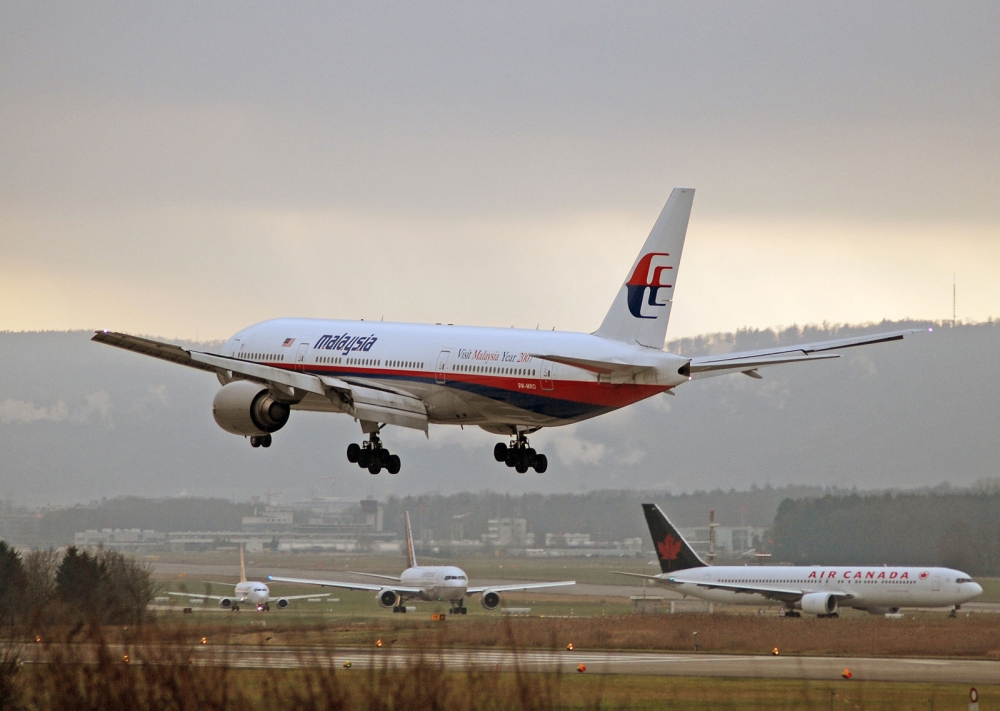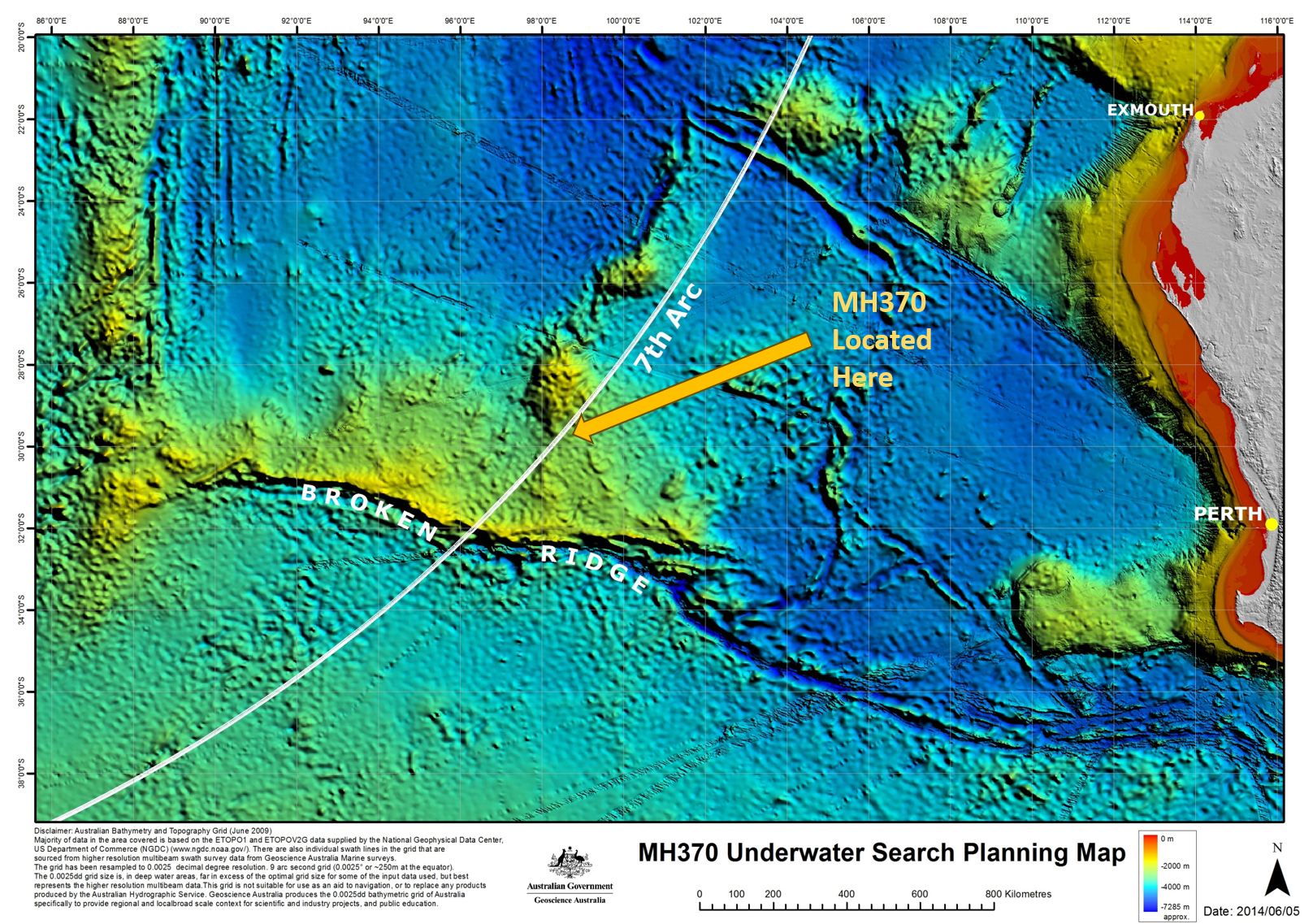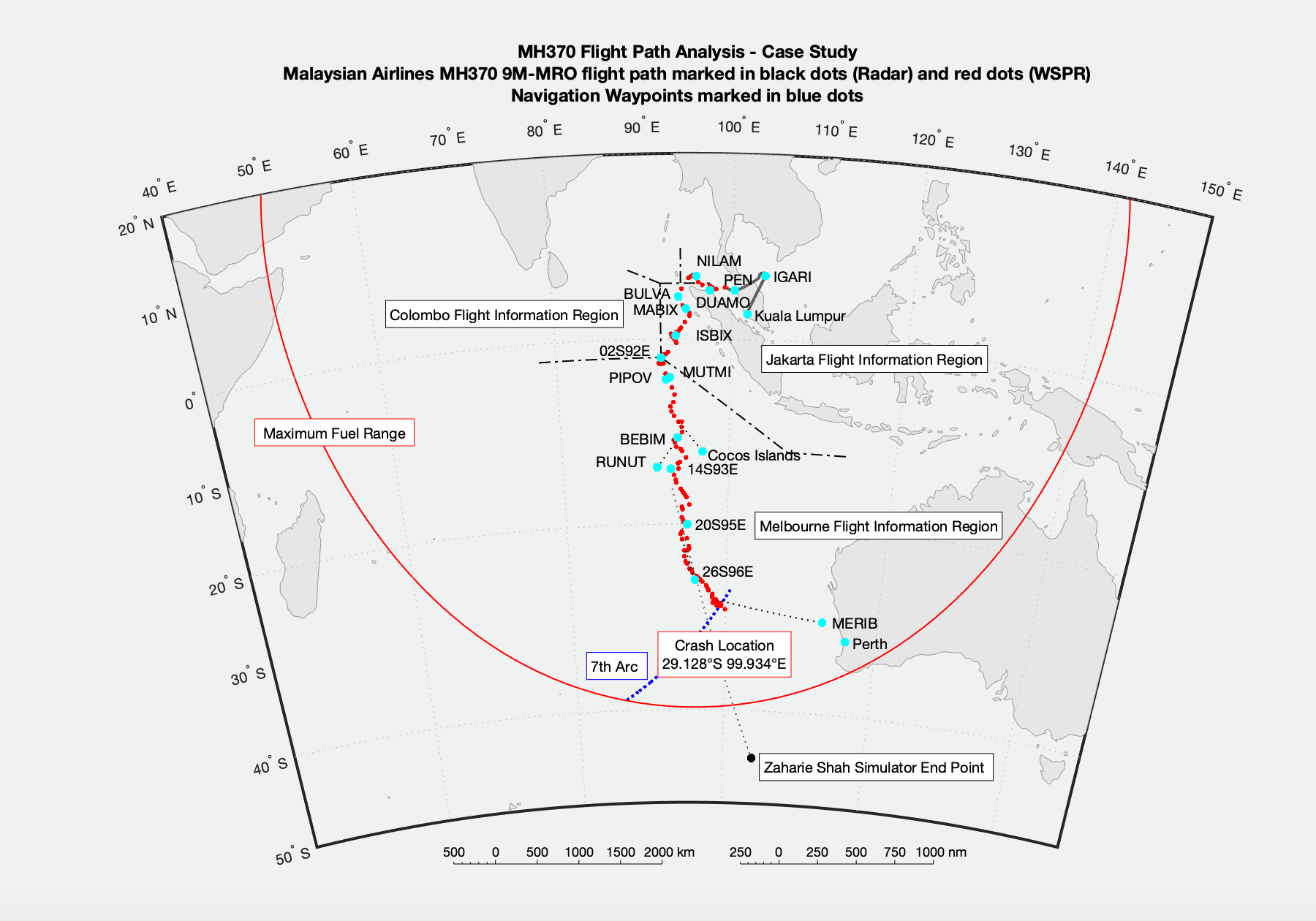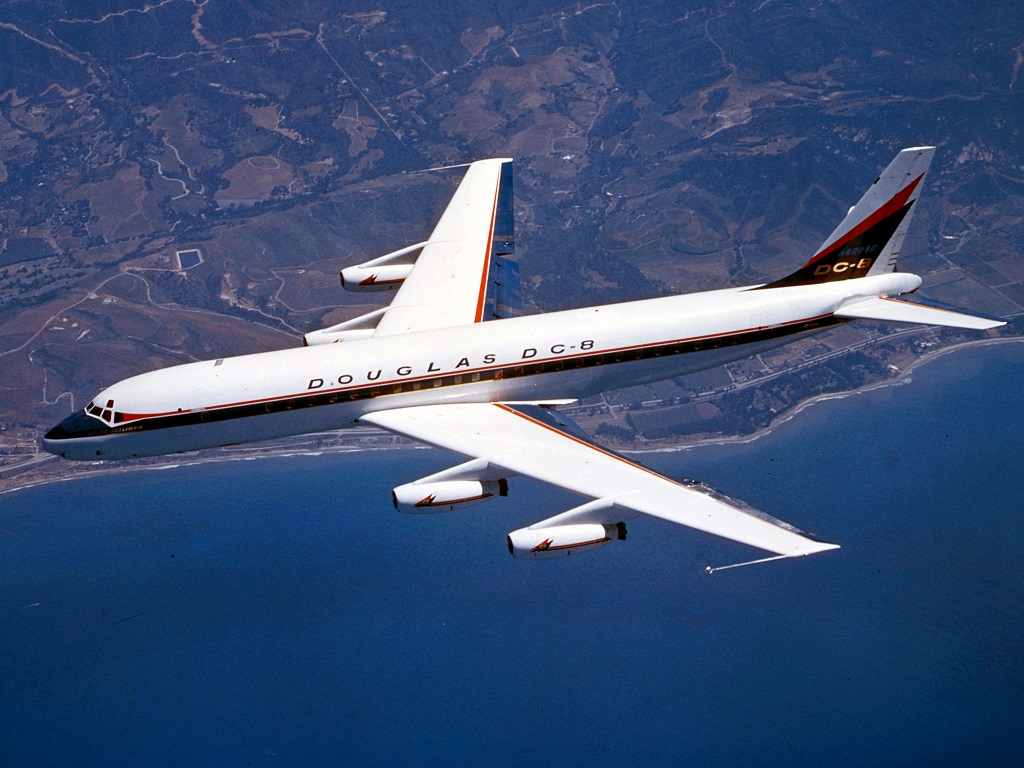Revolutionary MH370 Tracking Proven Over Short Distances
18 December, 2023
4 min read
By joining our newsletter, you agree to our Privacy Policy


WSPR, the revolutionary tracking technology, that will launch a new search for MH370 in 2024, has now been proven over short distances in a new 61-page technical paper authored by three leading experts.
The technical paper "How does WSPR detect Aircraft over short Distances? Technical Paper" is authored by Richard Godfrey, Dr. Hannes Coetzee (ZS6BZP) and Prof. Simon Maskell, and with other papers, forms the basis of new evidence of the location of MH370 west of Perth, Western Australia.
Put simply when an aircraft flies through a radio (Weak Signal Propagation Reporter WSPR) link it disturbs the signal and that signal and the resulting disturbances have been stored in a global database since 2008.
The location is detailed in a 232-page report previously published and is 1,560km or 842nmi west of Perth (277 degrees) – slightly north of that previously thought. The aircraft is believed to be resting at a depth of up to 4,000m.

The exact location is within the area defined by Prof. Pattiaratchi and Prof.Wijeratne of the University of Western Australia in their drift analysis, which was between 28°S and 33°S along the 7th Arc. The crash area is 70nmi by 40nmi or 130 km by 74km and about 46 per cent of the new area has been searched before.

You can read that report here.
Building on that report with more supporting data the authors have produced a series of supplemental technical papers further testing WSPR technology and highlighting how the detection works as there appears, for some reason, to be some confusion amongst a few of those keenly following the loss of MH370.
This technical paper highlights how WSPR works over short distances and the authors point out that since the demonstration by Robert Watson-Watt and Arnold Wilkins in 1935 of detecting a Handley Page Heyford aircraft by using radio signals from BBC Daventry, radar systems are now used around the world for aircraft detection and tracking.
Over 120 books written about the MH370 disappearance
JOIN: AirlineRatings.com YouTube Channel
GET: Accurate MH370 Information From AirlineRatings.com Newsletter
The authors say in their conclusion:
"In this technical paper, we demonstrate how WSPRsignals can detect aircraft over short distances like radar. In a subsequent technical paper, we demonstrate how WSPR signals can detect aircraft over long distances using ionospheric propagation around the globe
"WSPR signals can reliably detect aircraft over short distances. We have shown that a number of aircraft of different types at different altitudes were detected close to the WSPR transmitter W8AC. The radio signals sent by station W8AC were received by station N8GA via a short ionospheric propagation over 252 km. During the 3rd November 2023, a total of nine flights were analysed with commercial aircraft including Boeing, Airbus, Embraer and Canadair flying at altitudes between 7,350 feet and 37,000 feet in the vicinity of the transmitter W8AC.
"Eight of the nine flights were detected with a total of 13 SNR anomalies. In two cases flights were additionally detected by frequency drift anomalies. The ionosphere is subject to a host of dynamic processes but is sufficiently stable over the110.6 seconds WSPR transmission time to detect an aircraft. The structure of the ionosphere changes considerably during the day for each WSPR link. Radio waves are not just refracted in the ionosphere, but can also experience lateral deviations from the direct propagation path, which are called ionospheric tilts.
"Sometimes the presence of the aircraft would make reception possible, by deflecting the transmitted ray to the receiver. When the aircraft track was aligned to the WSPR propagation path, we observed multiple SNR anomalies in successive two-minute WSPR time slots. In five cases there were multiple transmissions at different frequencies in the same two minute WSPRtime slot resulting in two SNR anomalies in the same time slot.
"Two areas requiring further research were identified relating to multi-path WSPR transmissions and the extent to which radio signals are disturbed by the wake of an aircraft and beyond its physical structure.WSPR can act as a multi-static and multi-frequency passive radar system over short distances. In a subsequent technical paper, we will demonstrate how WSPR signals can detect aircraft over long distances using ionospheric propagation around the globe. In this paper we showed how a single WSPR link can detect aircraft, in the next paper we will show how multiple WSPR links can combine to detect aircraft with a higher confidence level."
Get the latest news and updates straight to your inbox
No spam, no hassle, no fuss, just airline news direct to you.
By joining our newsletter, you agree to our Privacy Policy
Find us on social media
Comments
No comments yet, be the first to write one.


